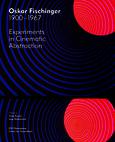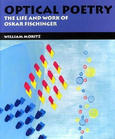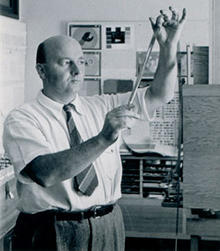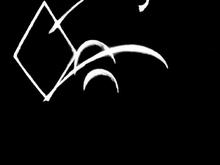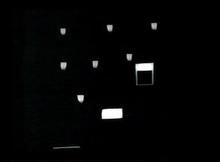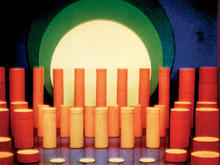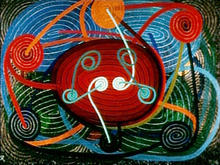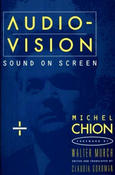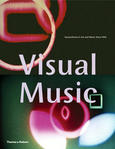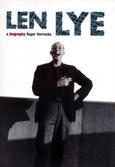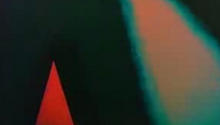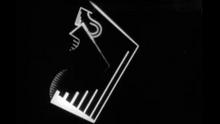Allegretto
(1936)by Oskar Fischinger. Diamond and oval shapes in primary colors perform a sensual, upbeat ballet to the music of composer Ralph Rainger. The geometric dance is set against a background of expanding circles that suggest radio waves.
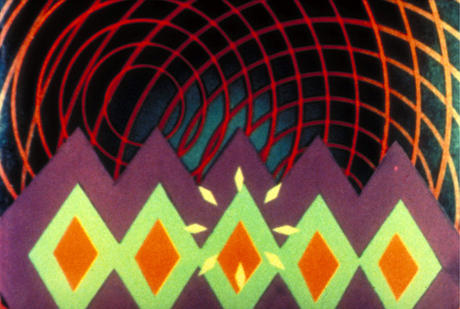
© Fischinger Trust/ Courtesy Center for Visual Music
Paramount brought Oskar Fischinger to Hollywood in February 1936, but did not allow him to continue his work in color film, and his tenure at the studio was short. A grant from The Museum of Non-Objective Painting (Guggenheim Foundation) allowed him to buy his short film Allegretto back from Paramount, and several years later he was able to complete it in color as he had originally intended. Fischinger used a cel-layering technique to animate formal visual equivalents of the musical concepts of rhythm, harmony and counterpoint. He implemented a "divisionist" technique of changing colors from frame to frame in order to achieve particularly luminous and chromatic hues that could not be produced by normal methods of animation photography. Fischinger was forced to finance the distribution of this film himself and was able to make only a few copies, but as the film was shown at museums and centers of advanced art all over the world, Allegretto eventually came to be recognized as one of the most accomplished pieces in the history of visual music.
Fischinger found it extremely difficult to work in studio situations, enduring episodes at Paramount (1936), MGM (1937), and Disney (1938-9). He composed An Optical Poem to Franz Liszt's Hungarian Rhapsody No. 2 for MGM. He designed the Johann Sebastian Bach Toccata and Fugue sequence for Disney's Fantasia, but quit because his designs were simplified and altered to be more representational. Hilla Rebay, curator of The Museum of Non-Objective Painting, supported Oskar's work during the difficult war years with several grants. Rebay commissioned him to synchronize a film with a Sousa march (to demonstrate loyalty to America). Oskar then proposed a film without sound in order to demonstrate the artistic validity of non-objective imagery, but Rebay insisted that he make a film to Bach's Brandenburg Concerto No. 3. While carrying out his commission for Rebay, Oskar discreetly composed the silent masterpiece Radio Dynamics.
Source: Center for Visual Music
